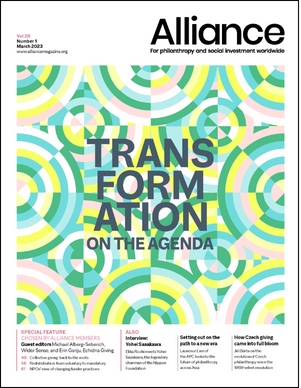To make a dent in the major problems we face, collaboration is necessary. But first of all, we need to get funders to support collective action
The achievement of the UN Sustainable Development Goals (SDGs) is a distant prospect. Prior to Covid-19, estimates suggested we were already over 50 years behind the 2030 target date. The impact of the pandemic on global well-being and livelihoods pushed this estimate back another 10 years. As political tensions, conflict, and the impacts of climate change rise across the globe, the concept of a near future free from hunger, poverty and inequality seems a far cry.
Why are we so far behind? In 2014, the UN estimate of the annual funding gap for developing countries to achieve the SDGs was $2.5 trillion. This figure has since risen and, worse yet, the gap is intensified by how existing funding is allocated and deployed. Currently, the majority of funds go via international intermediaries who are detached from the communities they seek to support, rather than direct to local actors within those communities. A recent Share Trust report estimated that if we were to shift the current funding system and invest directly into local actors, international development funding would be 32 per cent more cost efficient.
While global crises continue to emerge and funding fails to meet even pre-crises needs, this much is clear: we need to change our approach.
Subscribe now from only £45 a year!
This article is only available for our subscribers
Existing users can login here


